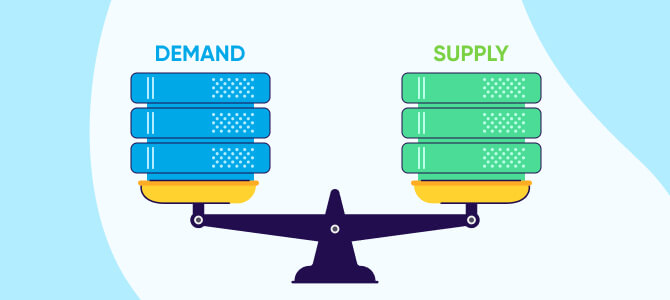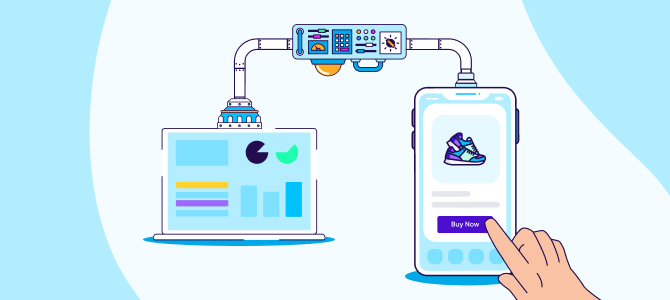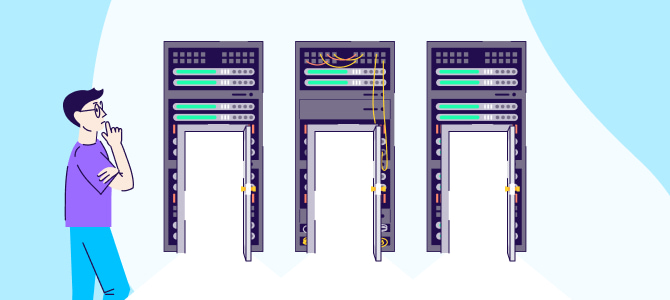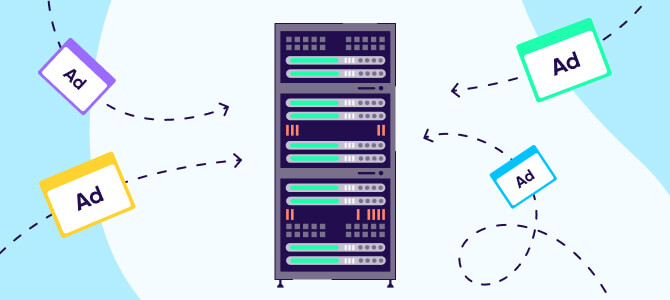
Demand-side platform (DSP)
A DSP (demand-side platform) is a piece of software that enables advertisers to buy digital ad inventory, automatically matching them with the right placements across multiple publishers. As part of the programmatic advertising ecosystem, DSPs are a highly efficient tool for advertisers to broaden their reach, connect with their ideal audience, and optimize campaigns in real time.
What are demand side platforms?
Demand-side platforms, known as DSPs, are a key part of the programmatic advertising ecosystem. They’re the software that advertisers use to buy and manage digital ad inventory, such as video, mobile, and search ads.
In essence, DSPs facilitate the relationship between advertisers and publishers (app or website owners), automating the ad-buying process and ensuring ads are served to the most relevant users. Advertisers can access the impressions they need to drive traffic, while publishers can monetize their space effectively.
Read on to learn how this all works in practice.
How do demand-side platforms work?
DSPs employ AI and machine learning to guide advertisers to the best place for their ads at the best price, ensuring they get in front of the users most likely to click and convert.
Before DSPs and the programmatic advertising ecosystem, advertisers had to manually negotiate placements with publishers and platforms, which was a time-consuming process. Now, all this is done automatically and in the blink of an eye. Ad space is bought and sold on a per-impression basis, meaning advertisers pay the publisher for a set number of ad views.
Let’s say you’ve been searching online for a new dishwasher – and when you next open up Facebook, you see an ad for that very product. That’s because Facebook has collected your browsing data to show you targeted ads. A DSP does the same thing, but on a much larger scale, offering ad creatives to multiple publishers.
DSPs and SSPs

SSPs (supply-side platforms) and DSPs sit on opposite sides of the programmatic advertising infrastructure. SSPs are used by publishers with ad space to sell (the supply). While DSPs, as we’ve seen, are used by advertisers who want to buy ad inventory (the demand).
DSPs and SSPs connect via a platform called an ad exchange: an online marketplace where DSPs bid on ad inventory in an automated, auction-style transaction. DSPs and SSPs enable inventory to be bought and sold across several ad exchanges at once.
Types of demand-side platforms
There are three main types of DSPs — self-serve, white-label, and full-service. Which one is right for your business will depend on your resources and how involved you want to be.
Self-serve DSPs
As you might have guessed, a self-serve DSP is a platform that lets you manage the ad-buying process yourself. You’ll need to sign up for the platform on a subscription basis, but then you’re free to upload your creatives, place bids on multiple ad exchanges, and optimize your campaigns as you choose.
As well as full control, you’ll benefit from broad audience reach and low costs, as there are no third parties involved in the self-serve approach.
White-label DSPs
A white-label DSP is similar to a self-serve platform in that it gives you full control over your ad buys and campaigns. The difference is that rather than subscribing to use it, you buy the platform as a blank canvas that you can customize to your needs.
For example, you can design your own programmatic algorithm for ad placements – instead of using a pre-existing one that comes with another DSP. You can also integrate a white-label DSP with as many ad exchanges and SSPs as you want, diversifying your audience and traffic.
Full-service DSPs
If you don’t have the resource to manage campaigns in-house, or if you’d rather focus on the creative side, you can have someone else take care of your programmatic ad buying. Opting for a full-service DSP is like working with an agency — you’ll have an account manager and a dedicated team to run your campaigns from start to finish.
If you’re happy to sacrifice control and flexibility, it’s a convenient option, although naturally you’ll have to pay for that external expertise.
Emerging specialist DSP categories
As the world of programmatic advertising evolves, and advertisers embrace new formats and channels, specialist DSPs are emerging to support particular types of ad buying.
Mobile DSPs
Rather than a stand-alone program, mobile DSPs are part of an already existing DSP ecosystem — their function is to handle your mobile inventory.
Mobile DSPs are connected to mobile ad exchanges — that is, where app publishers and developers offer their available mobile and tablet impressions. DSPs automatically analyze the inventory and decide which impressions are valuable to the advertiser. Once a bid is accepted, the ad creative is served when the app is initialized, downloaded, or opened.
Video DSPs
Video advertising has been rising steadily, with research suggesting as many as 91% of businesses use this tactic to engage and delight users as they consume content online. So, it’s hardly surprising that you can now find DSPs specializing in video ads.
Offering a wide range of video inventory and advanced targeting — ensuring an engaged audience and good brand fit — these DSPs enable advertisers to reach their ideal customers more effectively and efficiently than ever before.
CTV DSPs
Connected TV (CTV) devices are those that connect to the internet so you can stream on-demand content. That content is provided by over-the-top providers, like Netflix or Hulu, which bypass traditional cable or satellite services to create a direct connection between viewer, publisher, and advertiser.
CTV DSPs focus on this fast-growing market, enabling advertisers to benefit from advanced audience insights and precise targeting capabilities. Inventory includes a range of formats specific to CTV advertising, such as pre-, mid- and post-roll ads, companion banners, and interactive ads.
6 benefits of a demand-side platform
Different types of DSP bring their own specific advantages, but below we’ve highlighted some universal benefits of this technology. You’ll notice the key themes are efficiency and simplicity: programmatic technology means previously labor-intensive processes can now be completed in seconds.
More efficient workflow for ad buyers
Instead of wrangling 15 different salespeople and the accompanying contracts, spreadsheets, PDFs, and price negotiations, ad buyers work with a single program, simplifying the workflow. Hit a few buttons, and media gets turned on. Companies can simply plug into existing infrastructure without needing to recreate it.
Lower costs
Because DSPs speed up ad buying by doing away with traditional (and time-sucking) ad-buying processes, they can save advertisers both time and money. And with sophisticated optimization capabilities (more on this coming up), you won’t waste your budget on the wrong campaigns or channels.
Expanded reach
Leaving no digital stone unturned, DSPs give you access to multiple ad exchanges at the same time and through one interface. This opens up an enormously diverse range of ad inventory, enabling you to pinpoint the placements that best match your audience and brand.
Sophisticated targeting
Traditionally, an ad network’s audience targeting features have restricted advertisers, tying them to particular segments and limiting their reach. In contrast, DSPs give advertisers the freedom to create their own targeting criteria for their ads.
Powerful data and optimization
DSPs give you access to in-depth analytics and reporting dashboards with clear visuals. This provides vital insights to adjust and optimize your campaigns in real time, delivering more effective results for your marketing spend.
Total control
As well as targeting a specific audience, you can finetune a range of additional settings on your DSP to test different parameters and boost results. For example, you can time when your ads are shown, cap how frequently a user is exposed to your ad, or avoid certain channels or audience types.
The programmatic advertising ecosystem

Programmatic advertising is the automated, real-time buying and selling of digital advertising space.
This ecosystem connects advertisers with the valuable impressions they’re looking for, bringing together a suite of AdTech (advertising technology) that includes DSPs, SSPs, ad exchanges, ad servers, and DMPs (data management platforms). Let’s find out how the pieces all fit together.
Real-time bidding (RTB)
Real-time bidding is the process of employing DSPs to bid automatically for ad impressions. In the split second between a user landing on the page and that page fully loading, the DSP manages the bidding between different advertisers, based on their budgets and targeting criteria, and the winning bidder’s ad is served in real time.
Programmatic direct
In contrast to RTB, programmatic direct is a non-auction model in which publishers sell their ad space directly to advertisers for a fixed amount of time, negotiating a price that’s fair for both sides.
This is useful when you want guaranteed ad impressions on premium web pages. Take the example of a popular clean eating blog selling ad space to an organic grocery store. The publisher has ad space that relates to the advertiser’s target audience, and the advertiser is guaranteed a certain number of impressions — it’s a win-win.
DSPs and ad networks
Ad networks are where advertisers and publishers connect, by aggregating ad space supply and then matching that with advertiser needs.
Don’t confuse ad networks with ad exchanges, which (as we saw earlier) are the digital marketplace for the buying and selling of digital advertising. An ad exchange is an open pool of impressions, whereas an ad network acts more like an intermediary.
Right now, programmatic advertising and DSPs coexist with ad networks, but as programmatic advertising becomes more sophisticated, ad networks may become obsolete. That’s due to the manual effort involved: with ad networks, media buyers have their personal manager, who is responsible for accepting the creatives and campaign details and then setting up the campaign.
DSPs and DMPs (data management platforms)
Similar acronyms, different roles! DMPs are platforms that store and analyze data from a wide range of audience sources. This can include both personally identifiable information and anonymous behavioral data.
DMPs feed this information to a marketer’s DSP, enabling them to serve the most relevant ads to users based on various characteristics.
DSPs and ad servers
An ad server is a platform used to store, manage, and indeed, serve digital ads. Ad servers work in conjunction with DSPs, which manage the bidding process and connect advertisers to publishers. An ad server without a DSP can’t connect to the programmatic ecosystem.
Ad servers are used by both ad buyers and sellers. Advertisers upload their creatives to a third-party server, while publishers use a first-party server to manage their inventory. Both parties benefit from granular performance measurement and reporting: advertisers can test and optimize creatives, while publishers identify the highest-value placements.
How to choose the right demand-side platform

Understanding how DSPs work is only half the battle — how do you know which demand-side platform is right for you?
Here are three questions to consider when looking for the right DSP:
1. Does it cover the basics?
At the most basic level, your DSP should have a user-friendly interface, unrestricted audience targeting options, and the ability to easily integrate with DMPs.
2. Does it optimize for specific KPIs?
Think about which KPIs are most meaningful for you and your business. Can this DSP provide the insights you need to optimize these?
For example, if you’re looking to grow brand awareness you should look for a DSP with a robust KPI dashboard that measures things like impressions, time on site, and unique users.
3. Does it offer access to the supply you need?
Perhaps the most significant deciding factor for any DSP is the inventory it offers. If you can’t access the right inventory, you won’t reach the right audience.
Advertising inventory is both the amount and type of ads available. The idea is to find a DSP that offers you access to high-quality supply on relevant channels, even if you exist in a niche market.
High-quality supply for a digital advertiser means that your ad is served next to high-quality publishing content. For example, aligning your ad with an established brand or popular niche site is more likely to generate clicks and conversions from an engaged audience.
Understanding the types of DSPs available (scroll up) will help you decide which DSP can get you the most valuable inventory for your needs. An ideal DSP can do this by providing direct publisher access (programmatic direct) or via SPO (supply path optimization) strategies.
11 prominent DSPs on the market right now
Now you know how DSPs work and what to look for, here’s a run-down of some of the most popular platforms out there.
Popular DSPs
The following DSPs are good all-rounders, giving you the extensive reach, in-depth reporting, and range of ad formats and targeting options you need to succeed in the programmatic world:
- Display & Video 360 (provided by Google)
- Amazon
- The Trade Desk
- Xandr Invest (great for CTV)
- Yahoo
Major DSPs for mobile app performance campaigns
For mobile DSPs, transparent analytics for both your strategy and media placement are imperative. Three of the best platforms on the market right now are:
- Moloco
- Liftoff
- Smadex
Major white-label DSPs
As mentioned earlier, a white-label DSP frees you from third parties and puts you in total control of your campaigns. If you want options to create multiple ad accounts, buy worldwide traffic, and customize and filter audience segments to your heart’s content, then consider these white-label DSPs:
- Beeswax
- SmartyAds
- AdKernel
Key takeaways
DSPs and the programmatic advertising ecosystem are full of specialized jargon, which is evolving as fast as the industry itself. But there’s no need to feel overwhelmed. Just remember:
- DSPs enable digital advertisers to buy high-quality ad inventory at scale, using an automated real-time bidding process to connect them with their ideal audience.
- Publishers use SSPs (supply-side platforms) to offer up their available inventory, while advertisers use DSPs to bid for impressions across multiple publishers. The two sides connect via an ad exchange to complete the deal, with the winning ad served to the user in milliseconds.
- Choose from self-serve, full-service, or white-label DSPs, depending on your budget and the level of control you want. You can also find DSPs specializing in mobile, video, or CTV advertising.
- A key benefit of DSPs is the way they’ve simplified the ad buying process, cutting out manual effort and negotiation. As well as time and cost savings, you can expect broad reach, sophisticated targeting, and the insights and control to fully optimize campaigns.
- A DSP is different from a DMP (data management platform), which gathers customer data, and from an ad server, which stores and manages assets and inventory.
- With a range of DSPs on the market, make sure your chosen platform does everything you need it to – including providing the right inventory access, targeting capabilities, and reporting.




